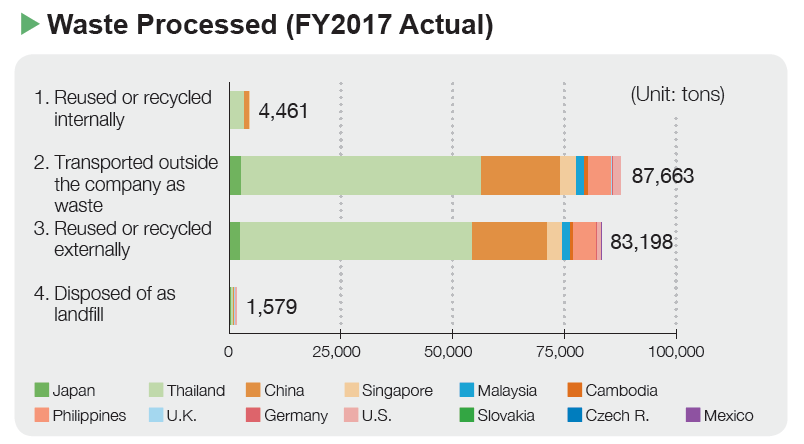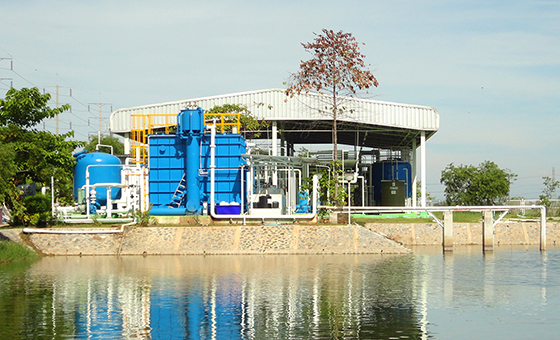Initiatives for Effective Use of Resources Back Number (2018)
Back to Latest Initiatives for Effective Use of Resources
Basic Approach
The MinebeaMitsumi Group recognizes that there are limits to the availability of resources used in its products, which include metals, plastics, and other raw materials, along with oil, natural gas, and other energy sources. Additionally, with regard to rare earth elements indispensable to the manufacture of electronics, since the number of countries producing and exporting the materials is limited, they are more susceptible to export restrictions.
We believe that the effective use of resources is critical to the continuation of our business activities, and to that end we are taking various measures.
Results of FY2017 Initiatives
 In FY2017, principal raw materials used by the MinebeaMitsumi Group included approximately 101,350 tons of steel and 18,500 tons of resin, and the total amount of materials used increased about 7% compared with FY2016. The amount of landfill waste generated by the Group's operations in FY2017 totaled 1,579 tons, decreasing 554 tons compared to FY2016.
In FY2017, principal raw materials used by the MinebeaMitsumi Group included approximately 101,350 tons of steel and 18,500 tons of resin, and the total amount of materials used increased about 7% compared with FY2016. The amount of landfill waste generated by the Group's operations in FY2017 totaled 1,579 tons, decreasing 554 tons compared to FY2016.
At our mass production plants in Thailand and China, we are recycling water inside the plants to the greatest extent possible and prevent external emissions through our "Plant Wastewater Zero System."
Water emissions from Group plants in FY2017 totaled 3,489,344 m3, an increase of 64,344 m3 compared with FY2016.

Initiatives at Business Sites
Initiatives for Effective Use of Resources (Japan, Thailand, Malaysia, China, and other countries)
The MinebeaMitsumi Group actively takes measures to increase yields in manufacturing and reduce the occurrence of defective products, but when producing electrical and electronic products, generation of leftover electric wire and steel materials, and the occurrence of reject products during manufacturing processes cannot be avoided.
We outsource this type of electrical and electronic waste to processing companies with advanced recycling technologies to break down and sort the waste to the raw material level to the extent possible and recycle it as resources.
Electric wire, for example, comprises copper wire covered by plastic, and resource recycling is not possible with the copper and plastic together. Consequently, discarded electrical wire is finely shredded to a degree that the copper and plastic are separated and the materials are sorted for resource recycling.

Shredded electric wire

Copper pieces recovered from electric wire
Effective Use of Rain and River Water (Thailand)

Bang Pa-in Plant's rainwater reservoir and rainwater reuse facility
In Thailand, our plants collect rainwater in a reservoir on the plant grounds and purify it at rainwater reuse facilities for reuse as industrial water, thereby reducing the amount of tap water used.
In addition to this system, one of the Thai plants took further steps in FY2012 to substantially reduce tap water consumption by drawing water from the nearby Chiang Rak Noi Canal and purifying it to use as an alternative to tap water. With the start of this system, the plant has reduced both its tap water consumption and its water related costs.
Future Issues and Goals
For FY2018, the Group's goal is to reduce the amount of waste sent to landfill by 9% per basic unit of production compared with FY2015.
In addition, we are presently conducting a survey of the current situation, and market analysis, of waste products disposed of as landfill with the aim of achieving still further reductions in the future.














